Related Research Articles

"Strawberry Fields Forever" is a song by the English rock band the Beatles, written by John Lennon and credited to Lennon–McCartney. It was released on 13 February 1967 as a double A-side single with "Penny Lane". It represented a departure from the group's previous singles and a novel listening experience for the contemporary pop audience. While the song initially divided and confused music critics and the group's fans, it proved highly influential on the emerging psychedelic genre. Its accompanying promotional film is similarly recognised as a pioneering work in the medium of music video.
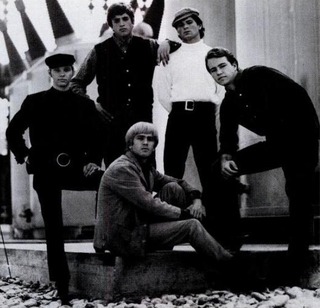
The Electric Prunes are an American psychedelic rock band, formed in Los Angeles, California, in 1965. Much of the band's music was, as music historian Richie Unterberger described it, possessed of "an eerie and sometimes anguished ambiance." Their most successful material was by songwriters Annette Tucker and Nancie Mantz, though the group also penned their own songs. Incorporating psychedelia and elements of embryonic electronic rock, the band's sound was marked by innovative recording techniques with fuzz-toned guitars and oscillating sound effects. In addition, guitarist Ken Williams' and singer James Lowe's concept of "free-form garage music" provided the band with a richer sonic palette and exploratory lyrical structure than many of their contemporaries.

The Shadows of Knight were an American rock band from Chicago, Illinois, that played a version of British blues influenced by their native city. When they began recording in 1965, the band's self-description was "the Stones, Animals and the Yardbirds took the Chicago blues and gave it an English interpretation. We've taken the English version of the Blues and re-added a Chicago touch," to which rock critic Richie Unterberger commented: "The Shadows of Knight's self-description was fairly accurate."
Dunwich Records was an independent American record label started by Bill Traut, Eddie Higgins and George Badonsky in Chicago in 1965. Dunwich was also a production company which licensed recordings to other labels, including Atlantic, Atco, Columbia, Mercury and SGC. The label was primarily known for the release of singles from the emerging Chicago rock scene in the 1960s. Only two artists, the Shadows of Knight and Amanda Ambrose, released albums on the label.
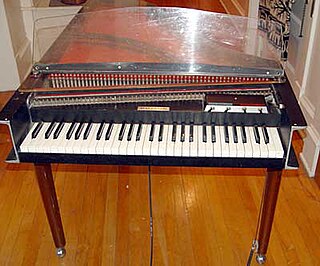
Baroque pop is a fusion genre that combines rock music with particular elements of classical music. It emerged in the mid 1960s as artists pursued a majestic, orchestral sound and is identifiable for its appropriation of Baroque compositional styles and dramatic or melancholic gestures. Harpsichords figure prominently, while oboes, French horns, and string quartets are also common.
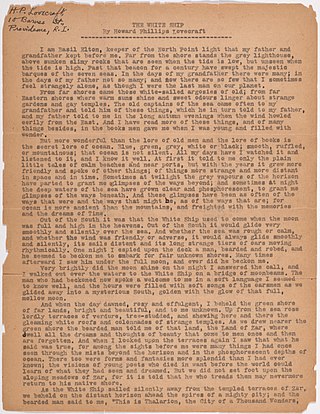
"The White Ship" is a horror short story by American writer H. P. Lovecraft. It was first published in The United Amateur #2, November 1919, and later appeared in the March 1927 issue of Weird Tales.

H. P. Lovecraft was an American psychedelic rock band, formed in Chicago, Illinois, in 1967 and named after the horror writer H. P. Lovecraft. Much of the band's music was possessed of a haunting, eerie ambience, and consisted of material that was inspired by the macabre writings of the author whose name they had adopted. Combining elements of psychedelia and folk rock, the band's sound was marked by the striking vocal harmonies of ex-folk singer George Edwards and the classically trained Dave Michaels. In addition, Michaels' multi-instrumentalist abilities on organ, piano, harpsichord, clarinet and recorder provided the band with a richer sonic palette than many of their contemporaries.
Charles Ethan Kenning is an American singer, songwriter and musician who performed as George Edwards when he led 1960s acid rock band, H. P. Lovecraft. He was adopted as a child and brought up under the name George Edwards. He reverted to his birth name of Ethan Kenning in his mid-30s.
Jerry McGeorge came to prominence in late 1965 as an American guitarist with the Chicago rock band The Shadows of Knight. He later joined the psychedelic rock band H.P. Lovecraft on bass in the summer of 1967, appearing on their debut album, H. P. Lovecraft.
David Miotke is an American keyboard player and singer, who under the name Dave Michaels was co-founder of the 1960s acid rock band H. P. Lovecraft.
The Shag were an American garage and psychedelic rock band in the 1960s, best known for their 1967 single "Stop and Listen". They were one of numerous bands at the time using the name "The Shags".

"Who Do You Love?" is a song written by American rock and roll pioneer Bo Diddley. Recorded in 1956, it is one of his most popular and enduring works. The song represents one of Bo Diddley's strongest lyrical efforts and uses a combination of hoodoo-type imagery and boasting. It is an upbeat rocker, but the original did not use the signature Bo Diddley beat rhythm.
The Cellar was a short-lived music venue in Arlington Heights, Illinois outside of Chicago that provided live early rock music in the mid-1960s to young people in the Chicago area. Founded in 1964 by Paul Sampson, a local record store owner who later became a music promoter and manager, The Cellar primarily featured early rock and roll acts, although some Chicago blues bands also performed there. The Cellar closed in 1970.

Evergreen, Vol. 2 is the second album from the Stone Poneys, released five months after The Stone Poneys. It was the most commercially successful of the Stone Poneys' three studio albums.

Live May 11, 1968 is a live album by the American psychedelic rock band H. P. Lovecraft and was released in 1991. The eight tracks included on the album were all recorded at The Fillmore in San Francisco, California, on May 11, 1968, soon after the band's original bass player Jerry McGeorge had been replaced by Jeffrey Boyan. The album consists of material taken from the band's first two studio albums and features very good sound quality considering the era in which it was recorded.
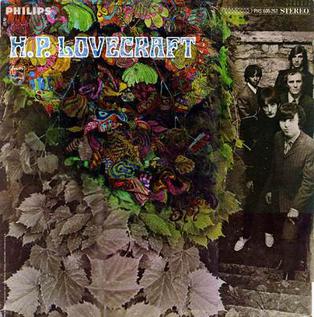
H. P. Lovecraft is the debut album by the American psychedelic rock band H. P. Lovecraft. It was released in October 1967 by Philips Records.

H. P. Lovecraft II is the second album by the American psychedelic rock band H. P. Lovecraft and was released in September 1968 on Philips Records. As with their debut LP, the album saw the band blending psychedelic and folk rock influences, albeit with a greater emphasis on psychedelia than on their first album. H. P. Lovecraft II failed to sell in sufficient quantities to reach the Billboard Top LPs chart or the UK Albums Chart, despite the band being a popular act on the U.S. psychedelic concert circuit. Legend has it that the album was the first major label release to have been recorded by musicians who were all under the influence of LSD.
Wimple Winch was an English psychedelic pop band that evolved from the group, Just Four Men. Originally a Merseybeat act, their individualized sound was personalized by their intricate vocal harmonies and exploratory lyrics.
William Raymond Traut was an American jazz musician, rock music producer, manager and record label executive. He co-founded the Dunwich and Wooden Nickel record labels, and produced The Shadows of Knight, The American Breed, the Siegel-Schwall Band, and Styx, among others.
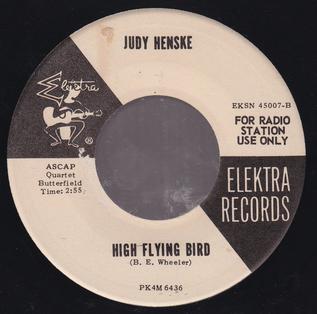
"High Flying Bird" is a song written by American folk and country singer-songwriter Billy Edd Wheeler, and first recorded by Judy Henske in 1963. It was performed and recorded by many musicians and groups in the mid and late 1960s, and was influential on the folk rock genre.
References
- ↑ Peter Buckley (2003). The Rough Guide to Rock. ISBN 9781843531050 . Retrieved March 20, 2015.
- ↑ Richie Unterberger. "H.P. Lovecraft - Biography". allmusic.com. Retrieved March 20, 2015.
- 1 2 3 4 Nick Warburton. "The White Ship: The Psychedelic Voyage of H.P. Lovecraft". thewhiteship.org. Retrieved March 20, 2015.
- ↑ Richie Unterberger. "Liner Notes for H.P. Lovecraft's H.P. Lovecraft/H.P. Lovecraft II". richieunterberger.com. Retrieved March 20, 2015.
- ↑ Gary Hill (2006). The Strange Sound of Cthulhu: Music Inspired by the Writings of H. P. Lovecraft. pp. 19–23. ISBN 9781847287762 . Retrieved March 20, 2015.
- ↑ "H.P. Lovecraft - Psych Rock Band". disocgs.com. Retrieved March 20, 2015.
- ↑ William Ruhlmann. "Dreams in the Witch House: The Complete Recordings - Overview". allmusic.com. Retrieved March 20, 2015.